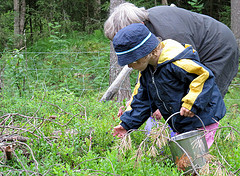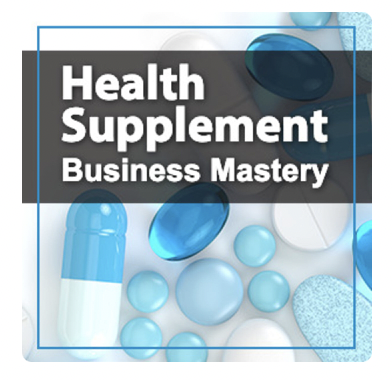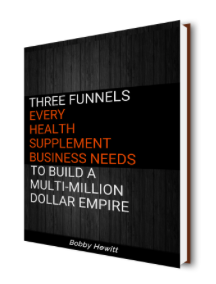 Previously we looked at several ways you can tap into what motivates your visitors in order to maximize your online conversion rates. Ultimately you will want to do some real user testing with live people to truly understand what’s going on inside your users head, but I’ll save that for a later post. To turbo charge the principal of tying motivation and conversion rate optimization, you need to couple your visitors’ motivations with how they move through your site. Today let’s concentrate on building from the last pos to produce more results.
Previously we looked at several ways you can tap into what motivates your visitors in order to maximize your online conversion rates. Ultimately you will want to do some real user testing with live people to truly understand what’s going on inside your users head, but I’ll save that for a later post. To turbo charge the principal of tying motivation and conversion rate optimization, you need to couple your visitors’ motivations with how they move through your site. Today let’s concentrate on building from the last pos to produce more results.
Visitors move through a website in a very particular way. Your web analytics click path analysis can give you a broad sense of where visitors are going and how they flow through your site. But it’s important to understand a general information flow philosophy and how to use it to design for conversion rate optimization.
The way people interact with a website and generally how people seek information, is shaped by the structure of the content itself. This is essentially the behavior known as information foraging. We move from web page to web page, website to website, search result to site, search to site, repeat, repeat seeking out patches of useful information or really just for exactly what we’re looking for.
Like our hunter-gatherer ancestors or animals foraging for food, that went from bush to bush looking for the richest juiciest berries we have adapted this to information seeking which is essentially what Information Foraging Theory (IFT) is all about.
Peter Pirolli, the father of Information Foraging Theory got involved with a group of fellow researchers after he joined the Palo Alto Research Center in 1992 to study information-intensive searches. Building on the work of John Anderson, who first studied the mind-environment link and the work of E.A. Smith whose behavioral ecology theory says that people’s strategies can be predicted in part by scrutinizing their environment, Pirolli realized that optimal foraging theory and the core mathematics behind it could be applied to how people search for information.
There are three main concepts from Information Foraging Theory that translate to Conversion Rate Marketing
- Information Patches
- Information Scents
- Information Diet
When an animal goes foraging for nourishment, they use their nose to direct them to where the food is. Visitors move through websites in much the same way. On the web however, a prospect follows information scent to forage for what they are looking for.
This pattern from the very top of the buying funnel, beginning with search would look like a hub and spoke. Starting at a list of search results as the hub a prospect would click out to a site. If the website didn’t carry the information scent the visitor was searching for they would go back to the hub and click on another result to go down the path of a new spoke.
Trigger words that the user searched for or words that solve his particular problem become the basis of the scent.
Pirolli evaluated his theory by testing Stanford students in a controlled search experiment to see how users followed information scent. He found that the difficulty of foraging on the Web appears to be related to the quality of the information scent cues available to the user. With strong scent, users moved quickly towards the target information. When the information scent was weak, visitors took more of a meandering path through a site.
The quicker a prospect moves to the target information, the more likely they are to buy from you. The weaker the scent is along the trail from search to site, to page to page the more likely the visitor will give up and go back out to the hub to find a new spoke.
In relation to your marketing conversion rate, it is vital to build into your design a strong scent trail for your forager to follow if you want to present your best chance of higher conversion rates.
Information scent in this example takes the form of many elements, each of which have to work together to create a synergy of congruence between each step. Some examples of scent in this example include search words within the organic search result or PPC ad, the URL included in the search result, the headline, sub headlines, body copy, images and links on the page as a result of the search.
In an additional study, Pirolli plotted the average scent ratings (rated by a panel of experts) of all the web pages visited, Pirolli found the reason why people switch to another site is because initially the information scent is high, but when the information scent falls below the average information scent in the pages encountered, users switch to another site or search engine. Pirolli also found that starting with a high information scent was associated with longer runs at a web site stickiness.
This means that scent foraging continues beyond the congruity of search and landing page and extends to the overall website itself. Much like foraging for berries on a bush a user goes down one promising branch on search of information and if the scent is weak, he will go back to the hub a spoke pattern to begin again or find a new website to sniff around. Each website represents a new Information Patch and it’s human nature to think that the grass is greener on the other side of the fence. Or in this case greener on another website.
To further apply this to Conversion Rate Optimization, Pirolli’s model can be used to predict behavior before the user acts based on sound theoretical foundations. For example based on Pirolli’s model you can predict when people will leave a site by measuring the information scent. Imagine what this could mean to Conversion Rate Design. When people left a site, the scent was dropping. Interestingly, just before a participant left a site, the information scent was much lower than the web page he switched to. Again, when a user perceives that the current information scent is lower than the average, he switches to a more promising patch or changes his information diet.
Discover the 3 funnels that can help your health supplement business succeed.

Listen to the Health Supplement Business Mastery Podcast for for dietary supplement entrepreneurs and marketers.



